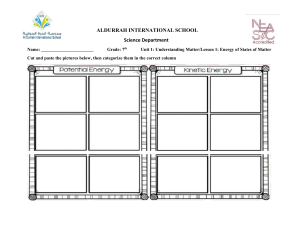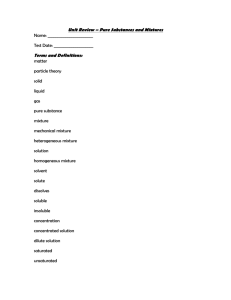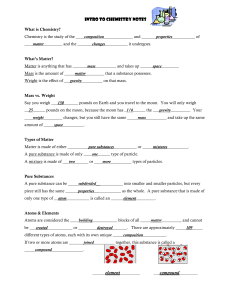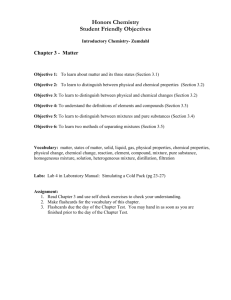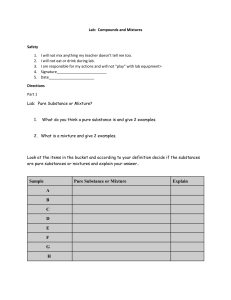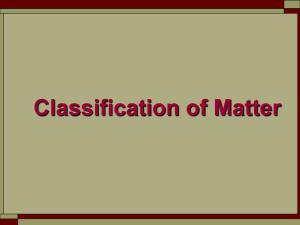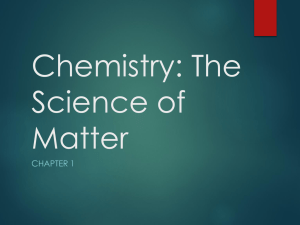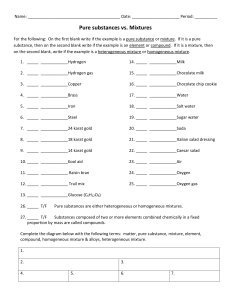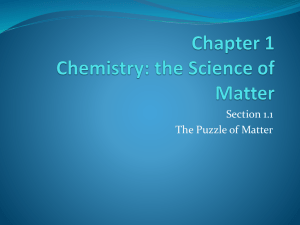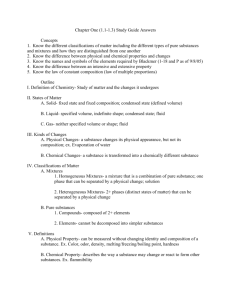Physical and Chemical Changes
advertisement
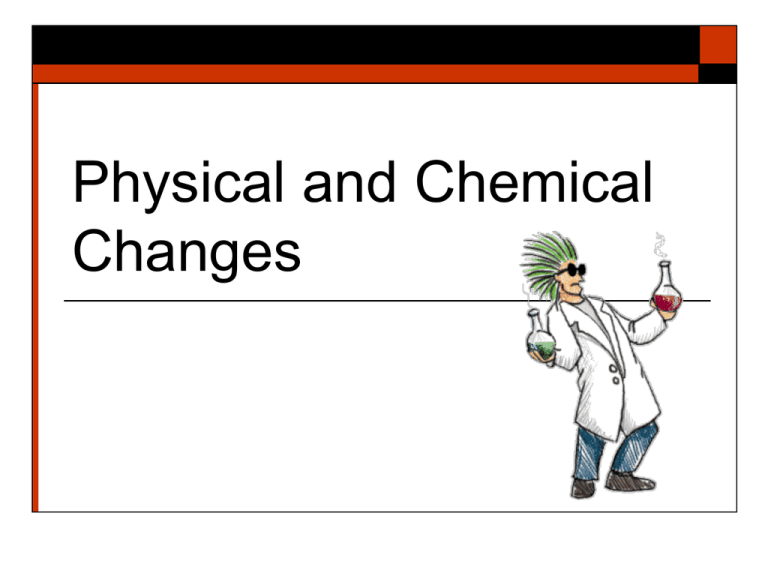
Physical and Chemical Changes Matter Matter – anything that has volume or mass. Atoms are the smallest unit of matter! Volume – anything that takes up space Mass – the amount of matter that something is made of MASS Mass Measured in grams with a balance Volume Liquid Volume measured in liters Meniscus – the curve that you see at the liquid’s surface used to measure the volume Volume Solid Volume Measured in cubic meters (m3) Cubic means “having 3 dimensions” Remember Inertia – tendency of all objects to resist any change in motion More Mass Greater Inertia harder to move an object with a large mass harder to stop an object with larger mass once moving A. Matter Flowchart MATTER yes MIXTURE yes Is the composition uniform? Homogeneous Mixture (solution) no Can it be separated by physical means? PURE SUBSTANCE no Heterogeneous Mixture yes Can it be decomposed by chemical means? Compound no Element B. Pure Substances Element matter composed of identical atoms EX: copper B. Pure Substances Compound matter composed of 2 or more elements in a fixed ratio properties differ from those of individual elements EX: salt (NaCl) C. Mixtures Non-specific combination of 2 or more pure substances. Two Types of Mixtures Homogeneous Mixture Heterogeneous Mixture even distribution of components uneven distribution of components EX: saline solution EX: granite A. Physical Property A characteristic of matter that can be observed or measured without changing the identity of its matter. can be used to separate mixtures EX: density, color, odor, mass and volume Chemical Property A characteristic that indicates whether a substance can undergo a specific chemical change. EX: flammability, reactivity Physical Change Physical changes occur when matter changes its property but not its chemical nature. Physical changes could include a change in: texture, shape, size, color, odor, volume, mass, weight, and density. Physical Change Remember! properties remain the same reversible can be used to separate mixtures Physical Change Chemical Change Chemical changes are changes matter undergoes when it becomes new or different matter. To identify a chemical change look for signs such as color change, bubbling and fizzing, light production, smoke, and presence of heat. C. Chemical Change Remember! properties change irreversible Signs: color change, formation of a gas/solid, release of light/heat Chemical Change A chemical change occurs when fireworks are used. Fireworks are made of metals such as magnesium and copper. These change chemically as they light up the sky. Density Density describes how much mass is in a given volume of a material. Density Solids, liquids and gases are matter, so they all have density. Determining Density To find the density of a material, you need to know the mass and volume of a solid sample of the material. 1. 2. Mass is measured with a balance or scale. Use the displacement method or calculate the volume. Density Problems What is my Density? Complete the following questions on a separate sheet of paper as a part of your homework assignment. Mass 1. 500g Volume 50ml 2. 300g 15ml 3. 25g 5cm3
